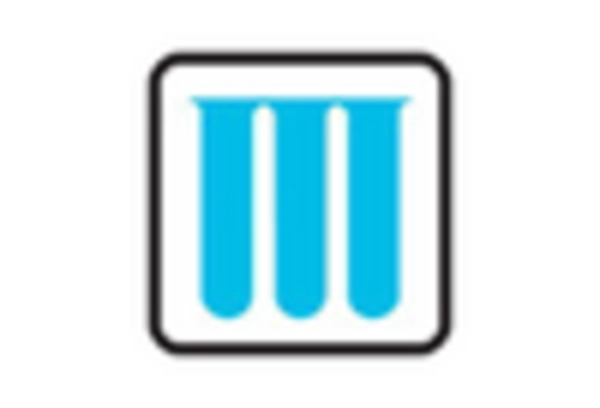Increased Healthcare Expenditure
Rising healthcare expenditure in the US is a significant driver of the actinic keratosis-treatment market. As individuals allocate more resources towards healthcare, there is a corresponding increase in spending on dermatological treatments. According to the Centers for Medicare & Medicaid Services, national health expenditures are projected to grow at an average rate of 5.4% annually, reaching approximately $6 trillion by 2027. This increase in healthcare spending allows for greater access to advanced treatment options for actinic keratosis, including prescription medications and specialized dermatological services. As patients become more willing to invest in their skin health, the actinic keratosis-treatment market is likely to benefit from this trend, leading to enhanced treatment availability and innovation.
Regulatory Support for New Treatments
Regulatory support for the approval of new treatments is a crucial factor influencing the actinic keratosis-treatment market. The US Food and Drug Administration (FDA) has streamlined the approval process for innovative therapies, encouraging pharmaceutical companies to invest in research and development. This regulatory environment fosters the introduction of novel treatment options, such as biologics and targeted therapies, which may offer improved efficacy and safety profiles. As new treatments gain FDA approval, they are likely to capture market share and meet the growing demand for effective actinic keratosis management. The actinic keratosis-treatment market stands to benefit from this supportive regulatory landscape, which may lead to a broader range of therapeutic options for patients.
Technological Innovations in Treatment
Technological advancements play a pivotal role in shaping the actinic keratosis-treatment market. Innovations such as laser therapy, advanced cryotherapy devices, and novel topical agents enhance treatment efficacy and patient outcomes. For instance, the introduction of non-invasive laser treatments has shown promising results in reducing lesions with minimal side effects. The market is projected to witness a compound annual growth rate (CAGR) of around 7% over the next few years, driven by these technological innovations. Furthermore, the development of combination therapies that integrate different modalities is likely to improve treatment success rates. As healthcare providers adopt these advanced technologies, the actinic keratosis-treatment market is expected to expand, offering patients more effective and tailored treatment options.
Increasing Incidence of Actinic Keratosis
The actinic keratosis-treatment market is experiencing growth due to the rising incidence of actinic keratosis among the population. Factors such as increased sun exposure and aging demographics contribute to this trend. According to the American Academy of Dermatology, approximately 58 million individuals in the US are affected by actinic keratosis, which underscores the need for effective treatment options. This growing patient population drives demand for various therapies, including topical treatments, cryotherapy, and photodynamic therapy. As awareness of skin health increases, more individuals seek medical advice, further propelling the actinic keratosis-treatment market. The increasing burden of this condition necessitates innovative solutions and comprehensive treatment strategies, thereby creating opportunities for market players to expand their offerings.
Growing Demand for Minimally Invasive Procedures
The actinic keratosis-treatment market is influenced by the increasing preference for minimally invasive procedures among patients. These procedures, which include cryotherapy and topical treatments, offer effective solutions with reduced recovery times and lower risks of complications. A survey conducted by the American Society for Dermatologic Surgery indicates that nearly 70% of patients prefer non-invasive options for skin treatments. This trend is likely to drive the market as more individuals seek convenient and less painful alternatives to traditional surgical methods. Additionally, the rise of outpatient treatment settings further supports this demand, as patients favor quick and efficient care. Consequently, the actinic keratosis-treatment market is poised for growth as healthcare providers adapt to these changing patient preferences.

















Leave a Comment